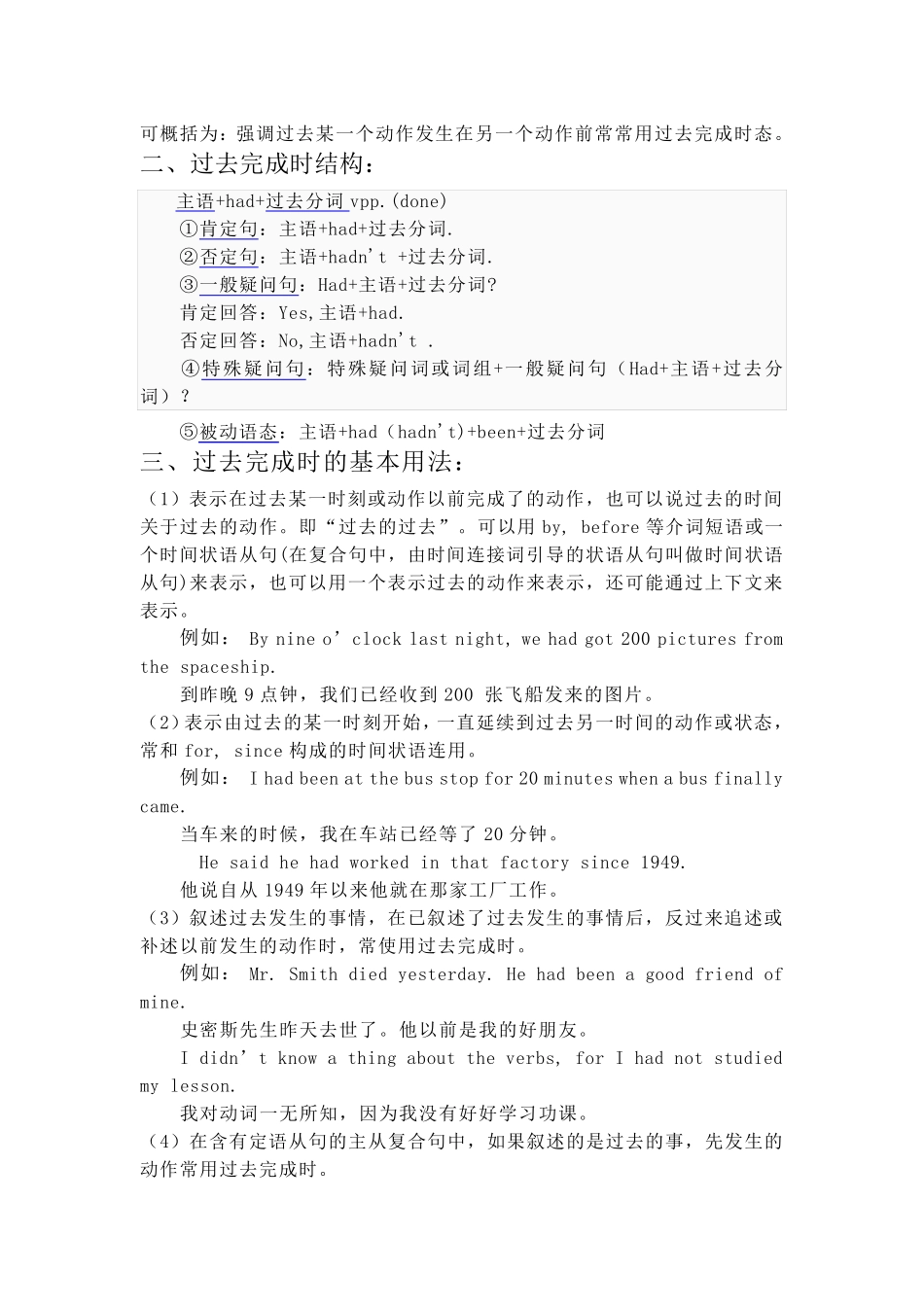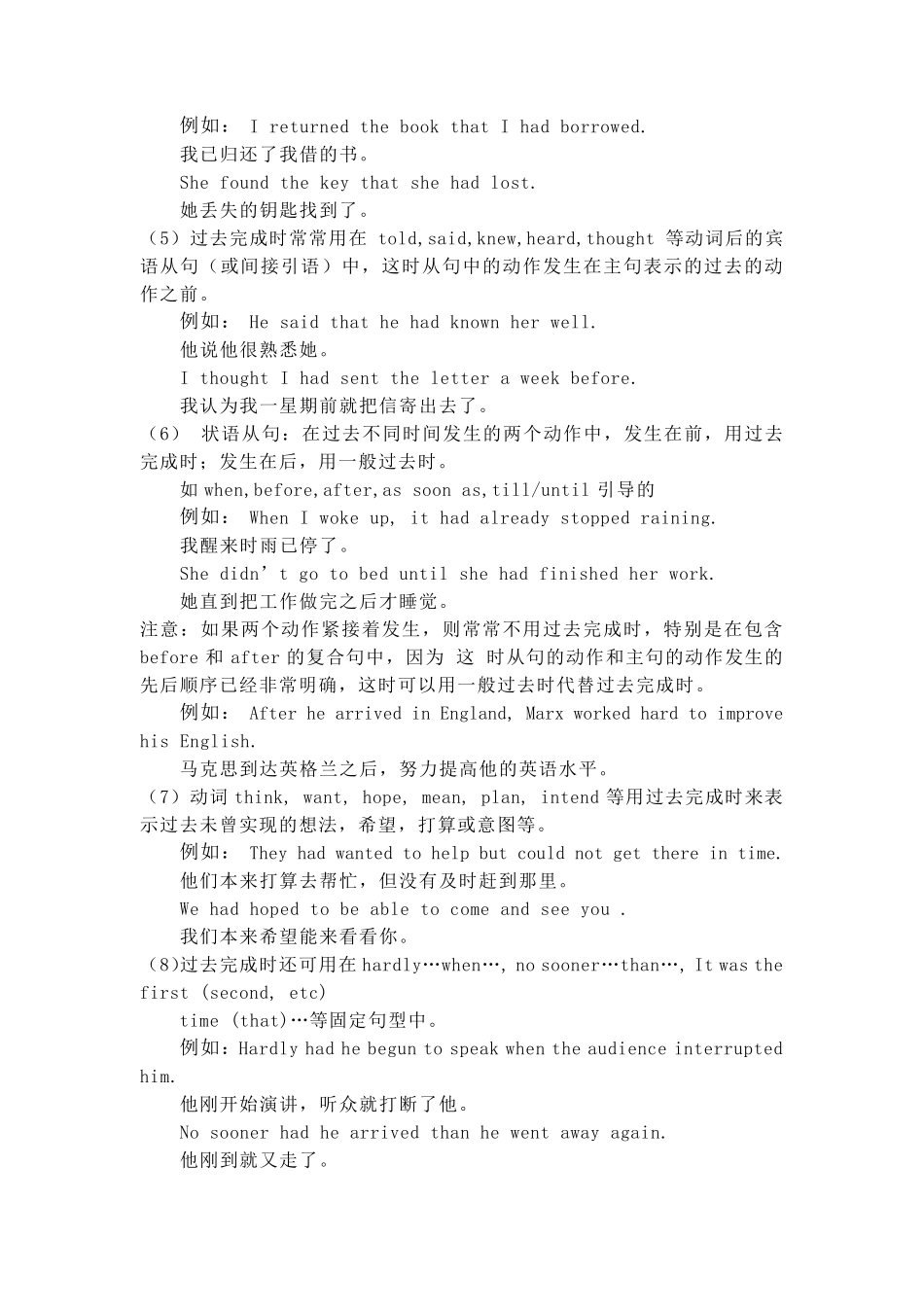1. cleaned the blackboard 2. closed the window ——————∣—————∣—————→∣——→ had cleaned the closed the window now blackboard She had cleaned the blackboard before she closed the window. After she had cleaned the blackboard , she closed the window. 1. ran out of breath 2. drank water ——————∣—————∣—————→∣——→ had run out drank water now of breath He had run out of breath before he drank water. After he had run out of breath, he drank water. 1. ate an apple 2. slept ——————∣—————∣—————→∣——→ had eaten slept now an apple She had eaten an apple before she slept. After she had eaten an apple , she slept. 一、 过去完成时定义: ①表示发生在过去的动作对现在造成的某种影响或结果,用来指定在另一个过去行动之前就已经完成了的一个事件。 ②过去某动作一直持续到现在将来可能还要延续下去。句中的动作发生在过去之前(过去的过去),即过去完成时动作发生在过去的过去。 He said he had been to Beijing twice. 他 说 他 已 经 去 过 北 京 两 次 。( 因 为“说”said 就是过去式,而去北京的动作发生在说 said 的过去,所以用过完而不用现完。 可概括为:强调过去某一个动作发生在另一个动作前常常用过去完成时态。 二、过去完成时结构: 主语+had+过去分词vpp.(done) ①肯定句:主语+had+过去分词. ②否定句:主语+hadn't +过去分词. ③一般疑问句:Had+主语+过去分词? 肯定回答:Yes,主语+had. 否定回答:No,主语+hadn't . ④特殊疑问句:特殊疑问词或词组+一般疑问句(Had+主语+过去分词)? ⑤被动语态:主语+had(hadn't)+been+过去分词 三、过去完成时的基本用法: (1)表示在过去某一时刻或动作以前完成了的动作,也可以说过去的时间关于过去的动作。即“过去的过去”。可以用by, before 等介词短语或一个时间状语从句(在复合句中,由时间连接词引导的状语从句叫做时间状语从句)来表示,也可以用一个表示过去的动作来表示,还可能通过上下文来表示。 例如: By nine o’clock last night, we had got 200 pictures from the spaceship. 到昨晚 9...


